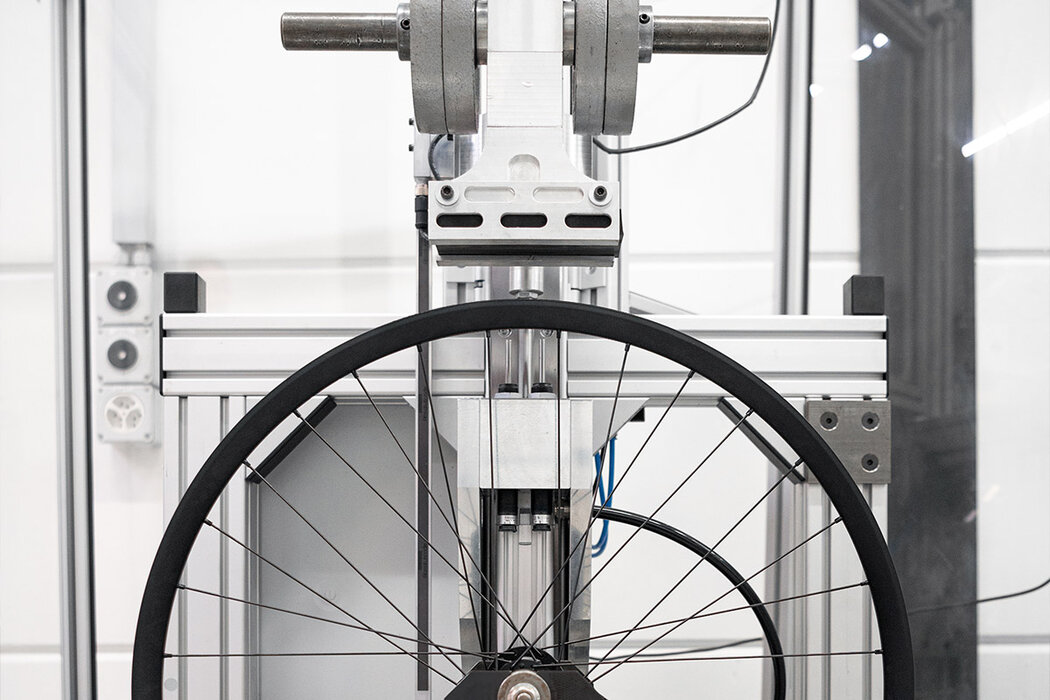Through many years of experience, DT Swiss has gained extensive testing know-how. Laboratory tests are conducted to replicate as closely as possible what our products will have to endure once in the field and throughout the entire product life cycle.
The testing facilities reflect cutting edge technologies and are the key to ensuring safety, reliability and outstanding product performance. The applied test methods and parameters vary depending on the intended use case and its respective maximum system weight, the ASTM F 2043 riding conditions and other relevant characteristics. All test methods, parameters and requirements are specified in our internal factory standard. This standard ensures compliance with the current international standards (e.g. ISO 4210) and defines running requirements to achieve outstanding product performance. In addition to the laboratory tests, numerous in-field tests are conducted to proof the products under real world conditions.
Get insight into some of the test methods across our product range!








